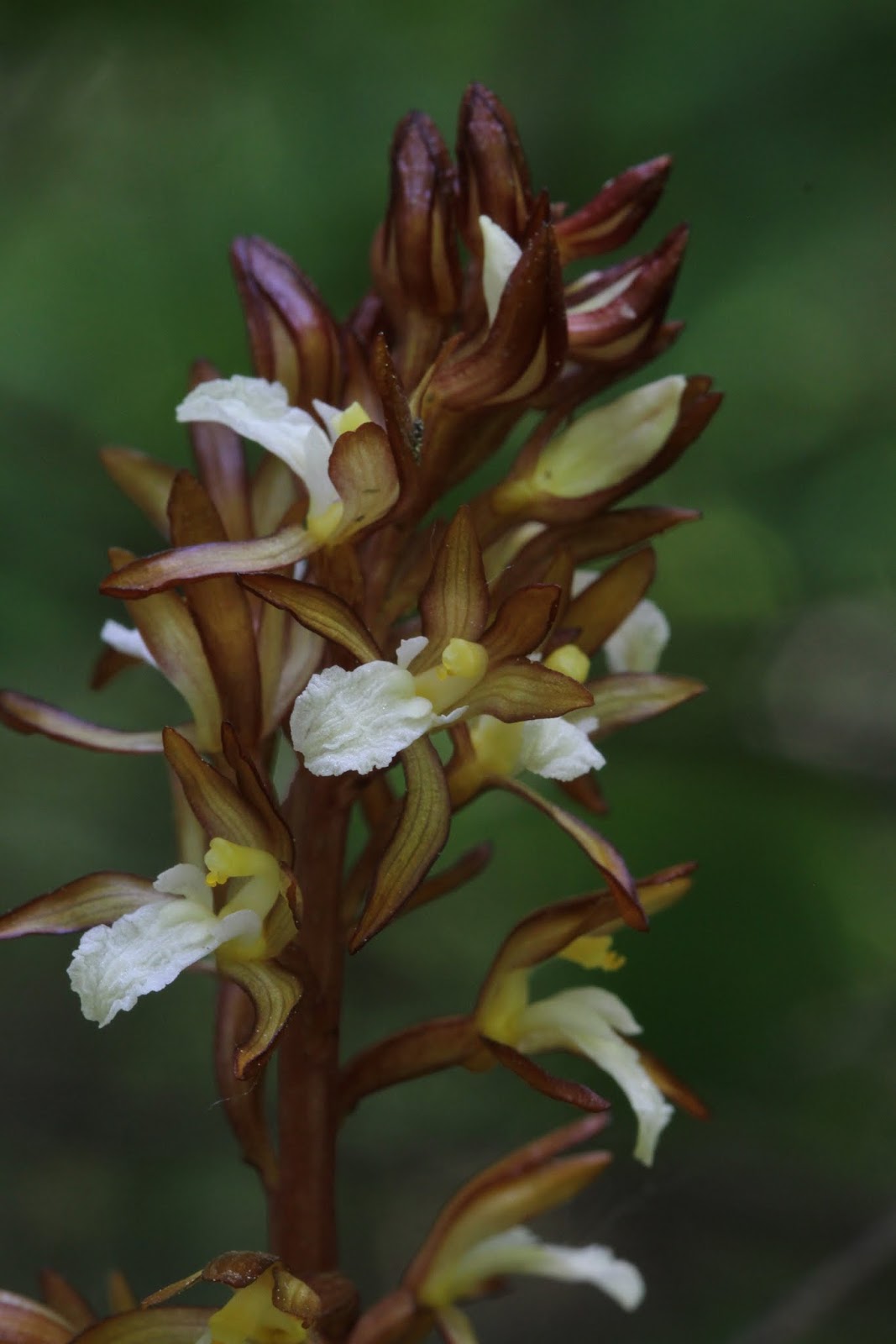Variety #1 - the Spotted Coralroot (found in both the eastern and western United States and Canada. This variety is distinguished by the lip which has parallel sides and by a later bloom time where it grows together with the Western Spotted Coralroot.
Corallorhiza maculata var. maculata - bronzy stems and purple spotted lip
("bronzy" covers considerable color variation in this case)
Corallorhiza maculata var. maculata fma. flavida - yellow stems and unspotted lip
(this is a form we have not seen)
Corallorhiza maculata var. maculata fma. aurea - yellow stems and spotted lip
(the forma aurea name is my own since this is not a named form)
Corallorhiza maculata var. maculata fma. aurea - yellow stems and spotted lip
(the forma aurea name is my own since this is not a named form)
(in the Northwest this appears to us to be the most common form)
Variety #2 is the Western Spotted Coralroot, which is found across Canada but only in the Western United States. This variety is distinguished by the rounded end or mid-lobe of the lip and by a slightly earlier bloom time where it grows with the ordinary Spotted Coralroot.
Corallorhiza maculata var. occidentalis - bronzy stems and spotted lip
(here again "bronzy" covers considerable color variation)
Unamed Color Forms
(the last looks a lot like var. ozettensis)
Variety #3 is found only in Washington and British Columbia, was only recently described (2001) and is quite rare, found only in a few locations on the Olympic Peninsula, Whidbey Island, Vancouver Island and the middle of British Columbia. It is known as the Ozette Coralroot after the location in which it was first found. This variety is distinguished by the unspotted lip, greenish flowers and flowering time.
Corallorhiza maculata var. ozettensis - purple-red stems and unspotted lip
The third variety is very distinct, but the other two seem to grade into each other and it is not easy to tell them apart unless one visits repeatedly an area where both grow. Then it becomes evident that the Spotted Coralroot blooms slightly later than the Western Spotted though there is some overlap, and tends to have smaller flowers and predominantly red stems (fma. rubra), at least in this area.
As can be seen from the photos, there is considerable variation also in flower color and in the spotting of the lip and flowers. While some flowers are free of spotting except on the lip others are spotted especially on the petals and the lips vary from fine and dense spotting to sparse and coarse, many lips having almost no spotting on the mid-lobe and others a single reddish-purple spot.
this is variety maculata
these are variety occidentalis
>



















































